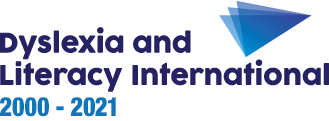Some specialists rely on this model where the basis is finding a mismatch between general abilities and performance in reading, spelling and writing. Using this approach, they measure general abilities and compare reading and spelling abilities to the levels expected for the measured level of general abilities.
However, the discrepancy model is not followed by all specialists and is less applicable to certain age groups.
The age criteria
Some specialists will prefer to compare the child’s performances in reading and spelling to what would be expected from a child of that age, based on the performance levels observed in large and representative groups of children of the same age.
Combined approaches
The two approaches above are not mutually exclusive and are often used together. In fact most specialists will examine general intelligence as well as reading and spelling abilities. They will also examine abilities such as auditory and visual attention, short-term memory and phonological awareness; all based on age criteria in order to provide a more rounded analysis.
They will also use other tests to exclude the possibility that purely sensory factors could account for the child’s difficulties.
Open the Overview toggle for an overview of the additional areas the specialist is going to look at in a formal diagnosis (compiled by Dr. Maria-Luisa Lorusso):
Dr Maria-Luisa Lorusso provides an overview of the kinds of examination made to arrive at a formal diagnosis.
- Hearing and vision
The child may undergo clinical examination for hearing (detecting, distinguishing and identifying sounds and words presented at different volumes) and vision (detecting and recognizing visual stimuli with varying size, colour, contrast, etc., in various parts of the visual field). - Auditory perception
This covers analysis, discrimination and categorization of verbal and non-verbal stimuli.
For instance, the child may be asked to identify the sounds he hears, to say what word, syllable or phoneme he recognized, or to say if pairs of sounds are the same or different. - Auditory attention
This is the capacity to concentrate on sounds and to select those which are pertinent and ignore those which are not
The child is asked to concentrate on certain sounds and react to them, trying not to be distracted by background noise. - Visual perception
This assesses the ability to discriminate the visual spatial characteristics of mirror images, spatial orientation, left-right lateralization and the representation and integration of visual stimuli.
The child is asked to say if pairs of drawings are the same or different, to mentally complete missing parts in drawings and recognize what would be the result in multiple-choice tasks, to recognize a certain shape embedded in patterns of figures and lines, etc. - Visual attention
We mean by this a sense of what is in the visual field; the capacity to focus and to follow a sequence by scanning; to concentrate on the visual target and to ignore distractors
Children are instructed to press a key on the keyboard as soon as they see a dot appearing on the computer screen, after having been alerted by a ‘cue’ bringing their attention to a position near (facilitating), or far from (distracting) the location where the dot will actually appear. Or they may be asked to quickly name a sequence of objects represented in rows or columns with varying ‘perceptual density’. - Visual-motor integration
There is a special reference to dysgraphia (poor writing): copying a design free hand, eye-hand coordination, fine motor control, characteristic position in writing.
The child is asked to copy a meaningless, complex geometric drawing; to imitate positions of the hands and fingers as shown by the examiner; to write a repetitive sequence of letters or signs as quickly as possible, etc. - Visual and auditory long-term memory
This is about the way in which knowledge of the letters and the correspondence between letter and sound is assimilated and automated, and the visual vocabulary is built up.
Finally, the child has to learn to associate new sounds to meaningless shapes and to evoke the same sound every time the shape is presented.
The formal report
The person who carries out a formal diagnosis will give a report to the parents, who are usually interviewed as part of the diagnostic procedure.
Encourage the parents to ask the assessor to include recommendations for appropriate teaching and therapeutic assistance. These can serve as guidelines for the school authorities to act on.
Once you have the official diagnosis in hand, it is useful for you and the parents together to liaise with the school authorities, in order to set up the best possible communication systems between all parties. This is one way of ensuring that the most appropriate strategies to help the child are put in place (see Section 3).
Some parents may be reluctant to let you see the complete quantitative assessment of their child. You can then point out that you need to know the child’s strengths and weaknesses in order to adapt your teaching. If they remain reticent, ask to see the recommendations at least.


